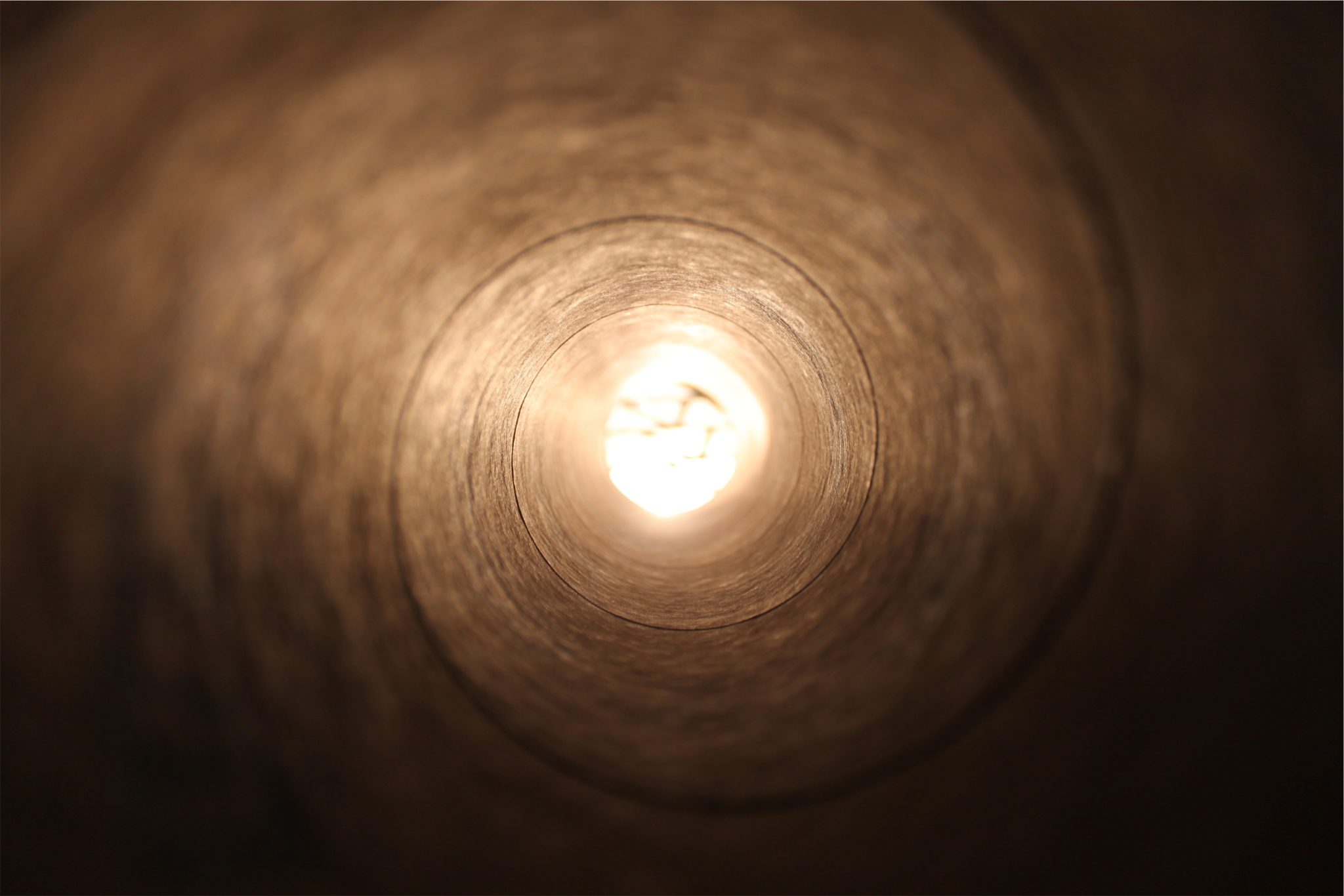The fourteenth day of the month of Iyar is Pesach Sheini, the “Second Passover.” When the Holy Temple stood in Jerusalem, this day served as a “second chance” for those who were unable to bring the Passover offering on its appointed day one month earlier, on the 14th of Nissan.[1]
In the ninth chapter of Numbers, the Torah relates the circumstances that led to the institution of the Second Passover. On the first of Nissan in the year 2449 from creation (1312 bce), two weeks before the first anniversary of the Exodus,
G-d spoke to Moses in the Sinai desert … saying: “The children of Israel shall prepare the Passover [offering] at its appointed time. On the fourteenth of this month, in the afternoon … in accordance with all its decrees and laws….”
There were, however, certain individuals who had become ritually impure through contact with a dead body and therefore could not prepare the Passover offering on that day. They approached Moses and Aaron … and they said: “…Why should we be deprived and not be able to present G-d’s offering in its time, amongst the children of Israel?”
And Moses said to them: “Wait here, and I will hear what G-d will command concerning you.”
And G-d spoke to Moses, saying… “Any person who is contaminated by death, or is on a distant road, whether among you now or in future generations, shall prepare a Passover offering to G-d. They shall prepare it on the afternoon of the fourteenth day of the second month, and shall eat it with matzot and bitter herbs….”[2]
The Power of Return
The eternal significance of the Second Passover, says the previous Lubavitcher Rebbe, Rabbi Yosef Yitzchak Schneersohn, is that it is never too late to rectify a past failing. Even if a person has failed to fulfill a certain aspect of his mission in life because he has been “contaminated by death” (i.e., in a state of disconnection from the divine source of life[3]) or “on a distant road” from his people and G-d, there is always a “Second Passover” in which he can make good on what he has missed out.
The Second Passover thus represents the power of teshuvah—the power of “return.” Teshuvah is much more than repentance, much more than “turning a new leaf” and achieving forgiveness for past sins. It is the power to return to one’s past to rectify its failings and reclaim its missed opportunities.
Teshuvah is achieved when a negative deed or experience is applied in a way that completely transforms its significance. When a person’s contact with death evokes in him a striving for life he would never have mustered without that experience; when his wanderings on distant roads awaken in him a yearning for home he would never have otherwise felt—these hitherto negative experiences are literally turned inside out. Contact with death is transformed into a more intense involvement with life; distance into a greater closeness.
Beyond Torah
This explains the unique circumstances under which the institution of the Second Passover became part of Torah.
Virtually all of the mitzvot of the Torah, including those governing rare and unforeseeable circumstances, were directly commanded by G-d to Moses. The law of the Second Passover is one of the few cases in which a “new” mitzvah was elicited by a petition from mortal men[4]—by the outcry of several individuals who protested, “Why shall we be deprived?!”
Why wasn’t the provision for a “Second Passover” included in the Torah’s initial legislation of the laws of Passover? Because the gift of teshuvah could not have been granted through the regular channels of Torah law.
Torah is the articulation of the divine will via a body of 613 commandments and prohibitions, a code of law that describes what G-d desires that we do and not do. If Torah defines a certain deed or situation as contrary to the divine will, it cannot subsequently regard it as positive and desirable. Thus the Midrash tells,
They asked Wisdom, “What is the punishment for the sinner?” Wisdom replied: “Evil pursues sinners.”[5]
They asked Prophecy, and Prophecy replied: “The soul who sins shall die.”[6]
They asked Torah, and Torah replied: “He shall bring a guilt-offering and he shall be forgiven.”[7]
They asked G-d, and G-d replied: “Let him do teshuvah and he shall be forgiven.”[8]
Torah can provide a formula for repentance; but it can see no way of escaping the fact that the person has transgressed the divine will. At most, it can forgive the deed and reconnect the person to his source of life. But it cannot change the negativity of sin—the fact that, at a certain point in time, the person had been in a state of disconnection from G-d.
So the Second Passover, with its premise that nothing, not even the past, is beyond rectification, could not have entered our lives through the conventional “chain of command” of Torah. It took a small group of Jews, contaminated by death and languishing on a distant road, to elicit the gift of teshuvah from the Almighty.
Their cry, “Why shall we be deprived?!” expressing a depth of yearning for attachment to G-d that only their currently distant state could have evoked, prompted G-d to supersede the formulation of His will as expressed in Torah and grant them a mandate to redefine the past with a “Second Passover.”
An Instant Life
A central principle in Chassidic teaching is that the entirety of the divine wisdom, from the most technical deliberations of halachah (Torah law) to the most esoteric kabbalistic passage, constitutes “one Torah.” The Torah may possess a “body” and a “soul,” but these together constitute a single, wholly integrated organism: the soul, or the spiritual significance, of a law is reflected in its body, and every “limb” and “organ” of its body has its corresponding significance in its soul.
The same is true of the laws governing the first and second Passovers. An entire tractate in the Talmud (Pesachim) details the hundreds of laws that apply to the Passover offering. Most of these apply equally to both Passovers; but there are several significant differences. These “technical” differences reflect the deeper conceptual import of the two Passovers: the original Passover observed by the “straight and true,” and the Second Passover established for the baal teshuvah, the “returnee.”
One of the primary differences between the two Passovers is that the Passover offering brought on the afternoon of Nissan 14 is followed by a seven-day festival,[9] while the Second Passover is but a single day.
Seven days signify a process, a routine, a natural course of action. G-d created the world in seven days and thereby stamped a seven-day work/rest cycle into the very fabric of the natural reality. The heart of man possesses seven major attributes (love, fear, harmony, ambition, devotion, connection and receptiveness), reflecting the seven divine attributes (sefirot) that G-d invested in His seven-day creation. So when we speak of a seven-day Passover, we speak of the graduated, step-by-step accomplishments of the tzaddik—the righteous individual who builds his relationship with G-d and fulfills his mission in life in accordance with the formula and “game plan” set forth in the Torah.
Not so the baal teshuvah, the one who strays from the natural course of his soul and then rebounds with a thirst for life that only those who have wandered in a deathly wasteland can experience. The Talmud tells the story of Elazar ben Durdaya, a man who transgressed virtually every sin in the book. One day, a harlot said to him, “Elazar ben Durdaya could never repent.” The recognition of how far he had gone shook him to the very core of his soul; “he placed his head between his knees, and wailed and sobbed until his soul departed from his body.” Upon hearing the story of this man, Rabbi Judah HaNassi wept and said: “There are those who acquire their world through many years’ toil, and there are those who acquire their world in a single moment.”
The essence of teshuvah is a single wrench of self, a flash of regret and resolve. “There are those who acquire their world in many years,” said the greatest tzaddik of his day, building it brick by brick with the conventional tools of achievement; “and there are those who acquire their world in a single turn[10] and moment”—in a single instant that molds their future and redefines their past.[11]
Not every baal teshuvah achieves the instantaneous transformation of Elazar ben Durdaya. But the one-day duration of the Second Passover expresses the nature of teshuvah: not the conventional, progressional life of the tzaddik, but the baal teshuvah’s drastic leap from extreme to extreme.
Conquering Inflation
Another halachic difference between the two Passovers is the prohibition against leavened foods.
The first Passover wages an all-out war on all leavened substances: not only is the eating of any form of leaven severely forbidden, but every last speck and crumb must be banished from our premises. Not so on the Second Passover. Although the Passover offering is then, too, eaten with the unleavened matzah, there is no need to rid ourselves of leaven; in the words of the Talmud, “leaven and matzah are with him in the house.”[12]
The Chassidic masters explain the spiritual significance of the prohibition of leaven on Passover: leaven, dough that has risen and inflated, represents the tendency of the human ego to rise and swell. Leaven must be completely eradicated from our premises, since an inflated ego is the source of all evil. The entire Torah is based on the premise that “There is none else besides Him”[13]—that G-d is the only absolute reality, since every created thing is completely dependent on Him who continually supplies it with life and existence. One who perceives himself as an existence in his own right, ultimately rejects the entire Torah.
The tzaddik’s reality consists of two distinct spheres: the permissible and the forbidden; that which he develops and that which he disavows. The 248 positive commandments of the Torah relate to those elements of his character and his environment which he utilizes in his service of G-d; the Torah’s 365 prohibitions define what is not within his power to redeem and sublimate, and is therefore off limits to him. Leaven and everything that it represents has no place in his life.
The baal teshuvah, however, is one who, having already wandered off into the forbidden realm, now exploits these negative elements and experiences to fuel his quest for divine life. In his home, leaven and matzah both reside; what is beyond the ken of the “first Passover” personality forms an integral part of the baal teshuvah’s service of G-d.
The Repentant Righteous
The Talmud cites a dispute between several sages regarding the status of the Second Passover. Some are of the opinion that it is “a festival in its own right” while others maintain that it is a “fulfillment of the first,” to be defined solely as a second chance for a failed opportunity.[14]
(There are several practical ramifications to this issue. For example, if one reaches the age of legal maturity [“bar mitzvah”] during the month between the two Passovers, or if a non-Jew converts to Judaism during this period, should they bring a Passover offering on the Second Passover? If the Second Passover is defined as a “fulfillment of the first,” then it would apply only to those who were obligated to observe the first and failed to do so. The new adult or new Jew has no lack to fulfill. On the other hand, if it is “a festival in its own right,” then anyone who has not brought a Passover offering on the First Passover can do so on the Second Passover.)
These two definitions of the Second Passover apply to its “soul” as well as to its “body.” In fact, it is only in the soul of the law that both opinions can be fully applied. Regarding the “body” of Torah law, we can only follow one opinion: though we regard both as legitimate Torah views (in the words of the Talmud, “these and these are both the word of the living G-d”[15]), in practice, we follow the majority opinion. But when it comes to the soul of Torah—to the conceptual-spiritual significance of the law—all opinions are equally applicable.
On the most basic level, teshuvah is the result of a sin in the literal sense, making the terms baal teshuvah and tzaddik mutually exclusive: one who hasn’t actually transgressed the divine will cannot experience teshuvah and the powerful attraction to G-d only it can bring. This is the equivalent of seeing the Second Passover exclusively as a “fulfillment of the first”—a phenomenon that comes only as the result of actual failing.
Yet there is also another, more universal teshuvah. The essence of teshuvah is the drive to return to one’s former, unblemished state—a drive that is fueled by the presently deficient state itself. Ordinarily, we consider the sin-free soul of a tzaddik to be perfect in its relationship with G-d, and thus devoid of the possibility for teshuvah. Yet in truth, the very placement of the soul into a physical body, and her subsequent enmeshment in material needs and concerns, is itself an infringement on her original, uninhibited bond with G-d. The very birth of man means that the physical faculties of the body are now the medium through which the soul must perceive, experience and relate to her Creator, greatly limiting the quality and scope of her spiritual life.
But as with the standard teshuvah for “real” sins, the distant road of physical life holds the potential for an even more intense, more meaningful bond with G-d than before. In this sense, the Second Passover is “a festival in its own right,” offering an opportunity for a teshuvah that is not limited to the literal sinner: an opportunity to exploit the distance and spiritual lifelessness of the material world as an impetus to greater and deeper connection with one’s source.
Based on an address by the Rebbe, Iyar 13, 5724 (April 25 1964)[16]
Adapted from the teachings of the Rebbe by Yanki Tauber
[1]. Today, we commemorate the occasion by eating matzah on that day.
[2]. Numbers 9:1-12.
[3]. “Life,” in the true and ultimate sense of the word, is attachment to G-d, the creator and provider of life. In the words of the verse, “Love the Lord your G-d … for He is your life” (Deuteronomy 30:20); “You, who cleave to the Lord your G-d, are all alive today” (ibid., 4:4). Thus our sages have said: “The righteous, even in death, are regarded as alive; the wicked, even in their lifetimes, are regarded as dead” (Talmud, Berachot 18a-b).
[4]. Another example is the law of inheritance by female heirs, elicited by the petition of Tzelafchad’s daughters (Numbers 27).
[5]. Proverbs 13:21.
[6]. Ezekiel 18:4.
[7]. Leviticus 5.
[8]. Yalkut Shimoni, Tehillim 702. For a discussion of these four perspectives on sin, see Sin in Four Dimensions, WIR, vol. VII, no. 3.
[9]. Outside the Land of Israel, we observe an “additional festival day of the diaspora,” making a total of eight days (see Three Times Three, WIR, vol. IX, no. 1). The original, biblically ordained festival is for seven days only.
[10]. The Hebrew word sha’ah used by Rabbi Judah translates both as “hour” and “moment.” The word also means “turn,” implying the shift from state to state that is the elementary measure of time and the essence of teshuvah.
[11]. Thus the Talmud (Kiddushin 49b) rules that “If a man betroths a woman, contingent upon the condition that he is a tzaddik, she is considered as possibly married to him even if he is an utterly sinful man—for perhaps, at the moment that he betrothed her, he had a thought of teshuvah.”
[12]. Talmud, Pesachim 95a.
[13]. Dueteronomy 4:35.
[14]. Talmud, Pesachim 93a.
[15]. Ibid., Eruvin 13b.
[16]. Likkutei Sichot, vol. XVIII, pp. 117-125.







